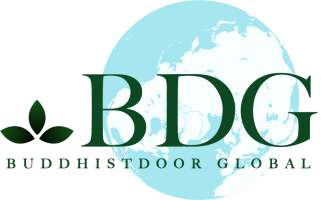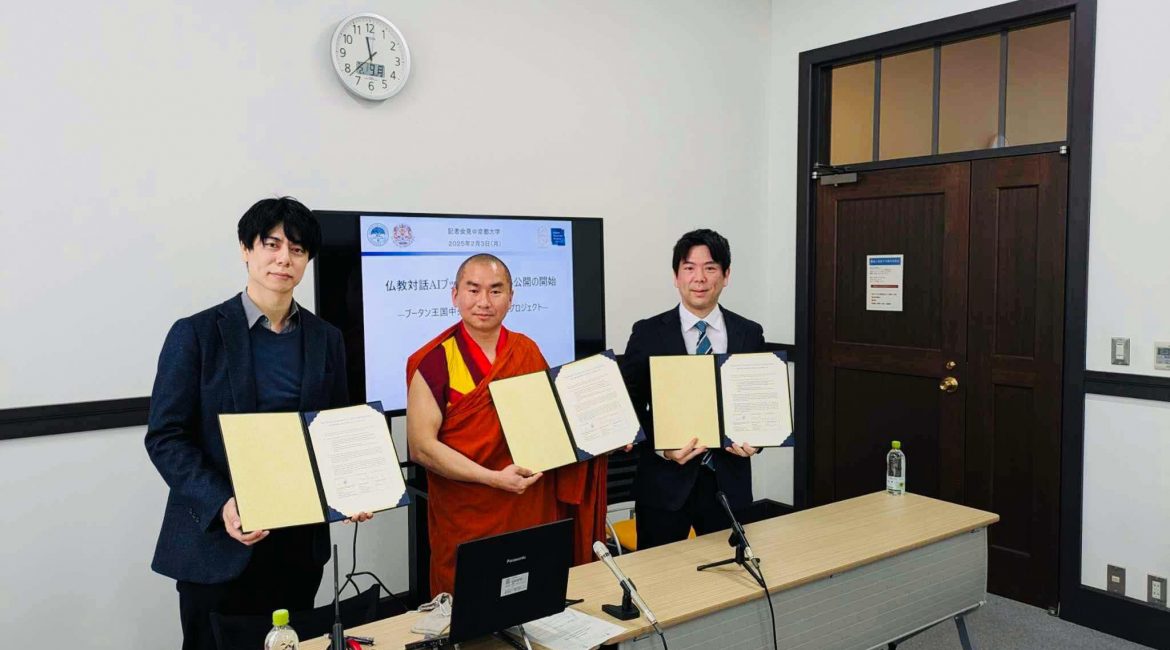Every day in the social media and news cycle, there seem to be constant reminders of the rapidly burgeoning dominance of AI. The question is not whether we are in a world where AI will rule our lives and, in turn, we shape how AI determines our well-being. That world is well and truly here, and if DeepSeek’s newfound prominence is anything to go by, AI will become the most important industry and technology in the 21st century.
The question is how Buddhists can harness AI to benefit humanity. Engaging with AI and asking the big questions (rather than simply denying the use of AI at all, or wholeheartedly embracing everything about it) is part of the vocation of being a thoughtful Buddhist in today’s world.
On 3 February, the Central Monastic Body (CMB) of the Himalayan kingdom of Bhutan and Kyoto University in Japan launched BuddhaBot, an AI-powered Buddhist dialogue system specializing in answering questions about Buddhism. In the next three years, up to 200 monks across the country will be able to use the chatbot. BuddhaBot deploys Sentence BERT, an algorithm provided by Google.
It will be implemented as a pilot project in monastic institutions and if successful, it will be rolled out in colleges and schools in Bhutan. (BBS) Ven. Choten Dorji, a senior member of the CMB, was at Kyoto University to inaugurate the launch while at the 2nd Conference on International Society for Bhutan Studies.
“After receiving the official request from the Central Monastery of Bhutan [CMB], we are pleased to initiate this international, nation-level project to make BuddhaBot available to monk communities in Bhutan,” stated lead researcher Prof. Seiji Kumagai in the official press release. Prof. Seiji is professor of the research organization Institute for the Future of Human and Society at Kyoto University (IFoHS).
“This is a significant first step toward making BuddhaBot ‘available anytime, anywhere, to anyone.’ We are determined to accelerate the development of ‘traditional wisdom tech,’ which combines traditional wisdom with modern, cutting-edge technology and provides a richer digital culture to the world. . . . Therefore, we have decided to begin system development and risk management studies to make the application available to the Bhutanese Buddhist community.” (Kyoto University)
The press release noted that the existing BuddhaBot was previously available only in Japanese, but through a collaborative initiative with Teraverse Co., Ltd, the private company’s research fellows Isamu Kiuchi and Seita Sasaki were able to develop a prototype of the English version of BuddhaBot. It is being improved in collaboration with the CMB, and the latter will use the prototype as a benchmark to refine BuddhaBot’s capabilities, particularly in relation to Buddhist texts.
The BuddhaBot initiative has been a long time in the making. In March 2021, Prof. Kumagai and Mr. Toshikazu Furuya (CEO of Teraverse Co., Ltd.) first announced the non-generative Buddhist dialogue AI. In July 2023, Buddha-Bot Plus was announced as a generative Buddhist dialogue AI, based on the latest version of ChatGPT (ChatGPT4 at the time of the launch; ChatGPT o1-mini at present). BuddhaBot Plus presents “machine-learned sources of early Buddhist scriptures. It automatically generates interpretations and additional explanations, providing users with more detailed and natural answers.” (Kyoto University)
A few months later, in September 2023, “VasubandhuBot” and “ShinranBot,” were launched based on BuddhaBot-Plus. Shinran-Bot, named after Shinran (1173–1263), a Japanese Buddhist preacher and founder of the Jodo Shinshu sect of Buddhism, had ChatGPT learn Shinran’s Shoshinge, which condenses the essence of faith in Amida Buddha to provide natural answers based on its content. And Vasubandhu-Bot, modeled after Vasubandhu, an Indian Buddhist scholar-monk and a founding master of Yogācāra from the 4th century, learned Vasubandhu’s Abhidharmakośa, which condenses the essence of Theravāda philosophy to provide natural answers. (Kyoto University)
Thanks to these new capabilities, and the fact that Buddhist chatbots can specialize according to the doctrinal emphases of a given temple, organization, or monastery, Buddhist AI has entered a new period of possibilities. A broader question is how BuddhaBot and other Buddhist chatbots can engage with the vexations and questions of the broader country, from civic society to government. Bhutan’s CMB, with its deep roots in the country’s lay community, is in an excellent position to do this. Rather than fearing the future, perhaps an AI that embodies compassion and wisdom can help provide much-needed guidance and healing for the world.
See more
BuddhaBot, AI-powered Buddhist dialogue system, introduced to Bhutan’s monastic institutions (BBS)
京大などが開発『AIブッダ』ブータン王国が導入 仏教の経典を学習した人工知能 人生相談などにわかりやすく回答(2025年2月3日 ) (YouTube)
AIブッダボット ブータン仏教界導入へ 京大グループと協定 (Japanese only)
Japanese-made AI Buddha to make debut in Bhutan (The Japan Times)
Related news from BDG
Buddhabot: Further Progress Made on AI Enlightenment Software at Kyoto University


